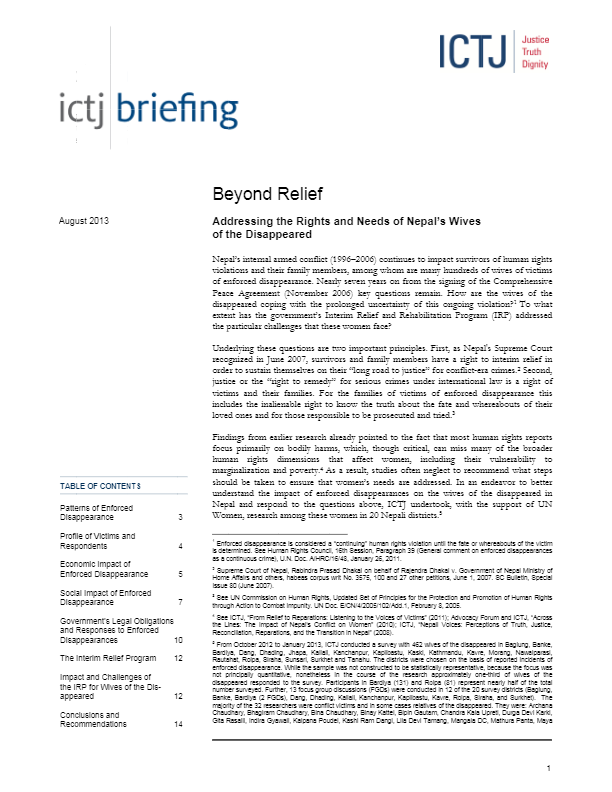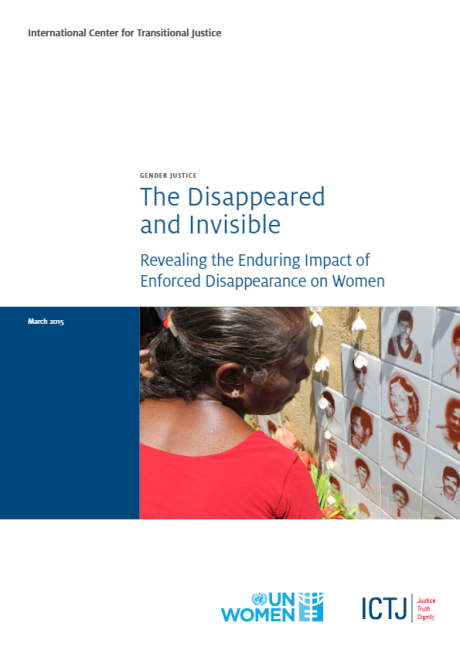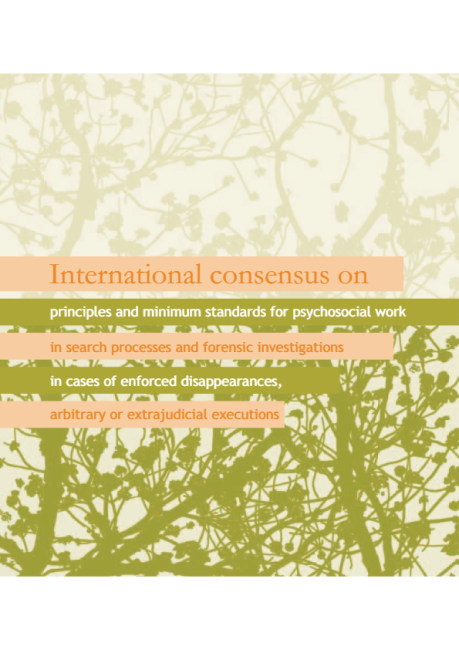
Beyond Relief: Addressing the Rights and Needs of Nepal’s Wives of the Disappeared
Based on the findings of over 450 interviews, this briefing paper looks at the socioeconomic impact of enforced disappearances on the wives of the disappeared in Nepal. More than 1,000 people remain unaccounted for after Nepal’s 10-year conflict ended in 2006. The majority were young men with wives and children. The paper highlights the precarious economic situation that results from the loss of a husband who is usually the family’s sole breadwinner. It also examines Nepali laws that compound financial hardships and the social stigmatization that leaves many women vulnerable to additional abuses. The paper recommends reforms to establish the legal status of victims of enforced disappearance and prioritizing land title for the wives of the disappeared to alleviate some of the ongoing consequences of these crimes.







